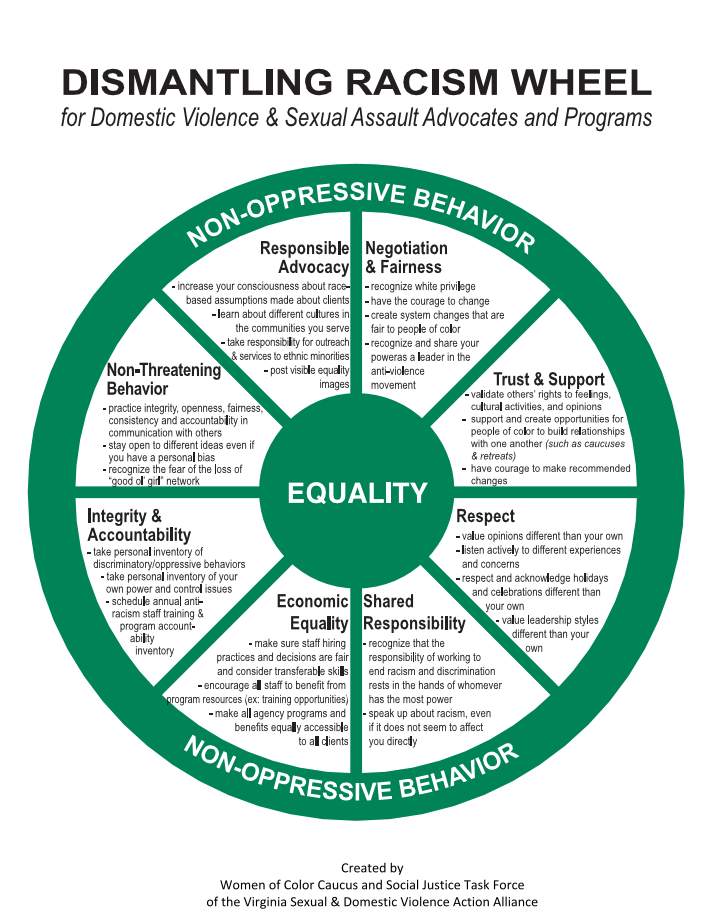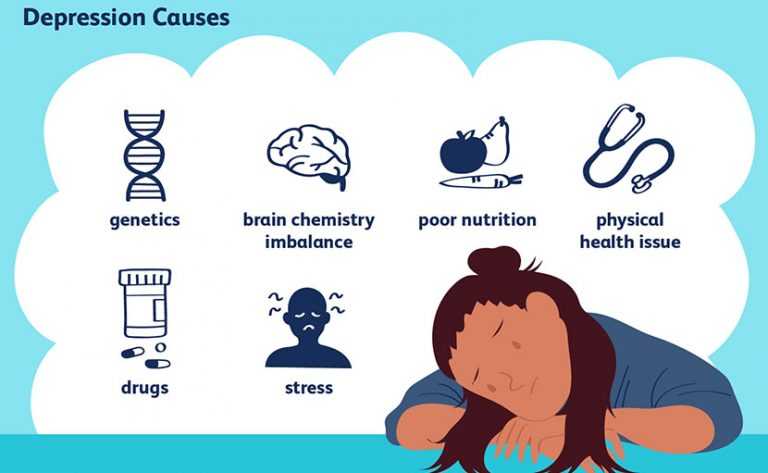Grief bereavement process
Grief And Bereavement | How Long Is The Grieving Process?
What are grief, mourning, and bereavement?
Grief
Grief is normal, and it is a process. Expressing grief is how a person reacts to the loss of a loved one.
Many people think of grief as a single instance or as a short time of pain or sadness in response to a loss – like the tears shed at a loved one’s funeral. But grieving includes the entire emotional process of coping with a loss, and it can last a long time. The process involves many different emotions, actions, and expressions, all of which help a person come to terms with the loss of a loved one.
We may hear the time of grief being described as "normal grieving," but this simply refers to a process anyone may go through, and none of us experiences grief the same way. This is because grief doesn’t look or feel the same for everyone. And every loss is different.
Mourning
Mourning often goes along with grief. While grief is a personal experience and process, mourning is how grief and loss are shown in public. Mourning may involve religious beliefs or rituals, and may be affected by our ethnic background and cultural customs. The rituals of mourning − seeing friends and family and preparing for the funeral and burial or final physical separation − often give some structure to the grieving process. Sometimes a sense of numbness lasts through these activities, leaving the person feeling as though they are just “going through the motions” of these rituals.
Bereavement
Grief and mourning happen during a period of time called bereavement. Bereavement refers to the time when a person experiences sadness after losing a loved one.
How long does the grieving process last?
Since each person grieves differently, the length and intensity of the emotions people go through varies from person to person. Grieving is painful, and it’s important that those who have suffered a loss be allowed the time they need to express their grief.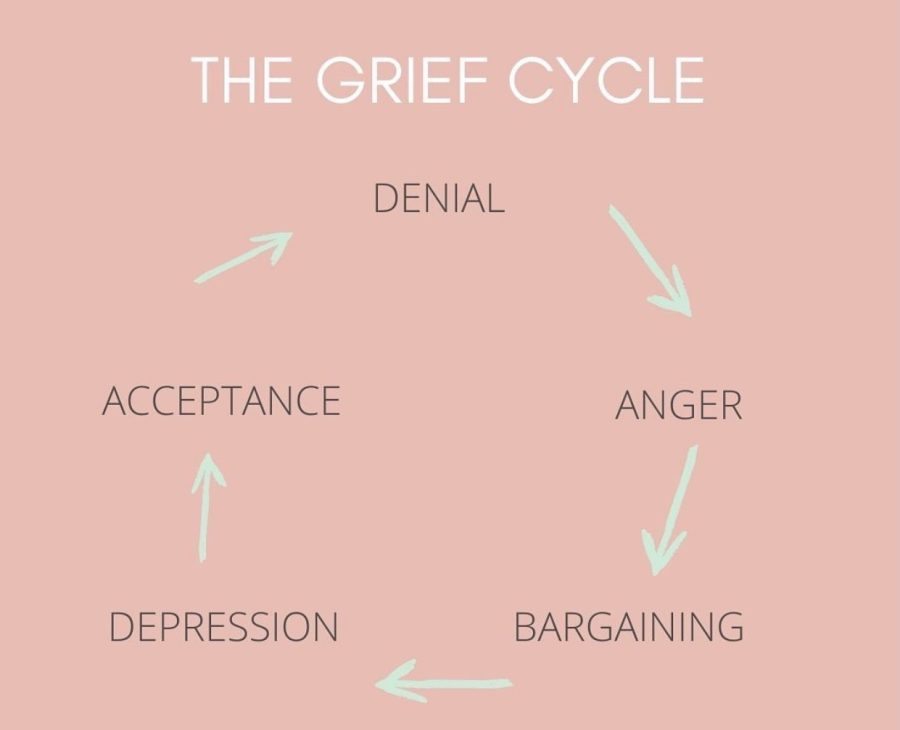
Although grief is described in phases or stages, it may feel more like a roller coaster, with ups and downs. This can make it hard for the bereaved person to feel any sense of progress in dealing with the loss. A person may feel better for a while, only to become sad again. Sometimes, people wonder how long the grieving process will last, and when they can expect some relief. There’s no answer to this question, but some of the factors that affect the intensity and length of grieving are:
- Your relationship with the person who died
- The circumstances of their death
- Your own life experiences
It’s common for the grief process to take a year or longer. A grieving person must resolve the emotional and life changes that come with the death of a loved one. The pain may become less intense, but it’s normal to feel emotionally involved with the deceased for many years. In time, the person should be able to use their emotional energy in other ways and to strengthen other relationships.
Grief can take unexpected forms
Difficult relationships with the deceased prior to death can cause unique grieving experiences for loved ones. In addition, prolonged illnesses can also cause grief to take unexpected forms.
Difficult relationships
A person who had a difficult relationship with the deceased (a parent who was abusive, estranged, or abandoned the family, for example) is often surprised by the painful emotions they have after their death. It’s not uncommon to have profound distress as the bereaved mourns the relationship they had wished for with the person who died, and lets go of any chance of achieving it.
Others might feel relief, while some may wonder why they feel nothing at all at the death of such a person. Regret and guilt are common, too. This is all a normal part of the process of adjusting and letting go.
Grief after long illness
The grief experience may be different when the loss occurs after a long illness rather than suddenly.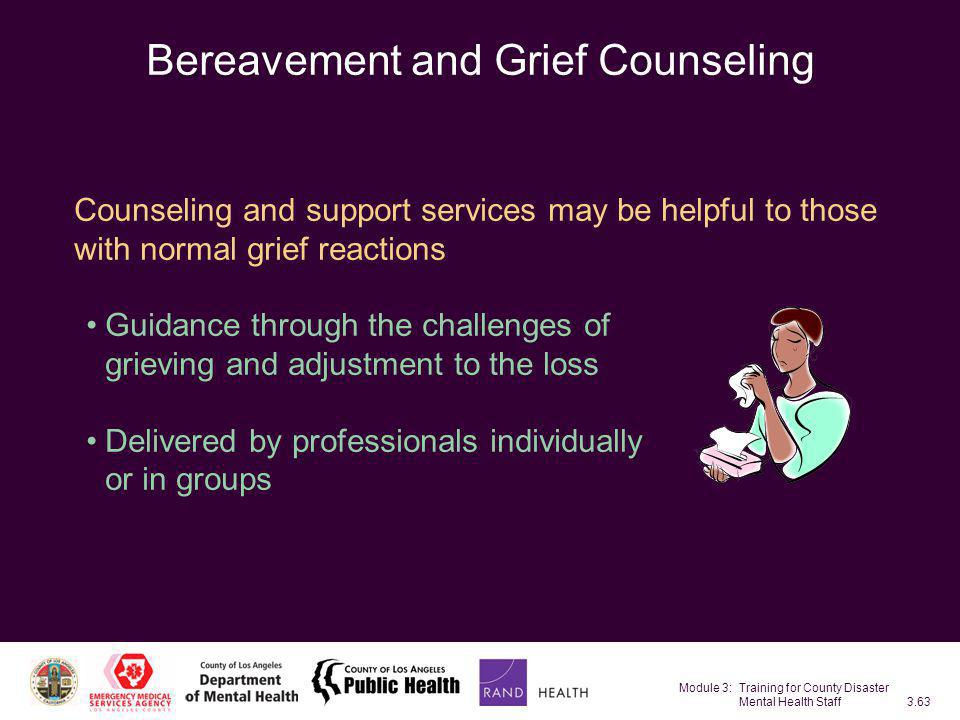 When someone is terminally ill, family, friends, and even the patient might start to grieve in response to the expectation of death. This is a normal response called anticipatory grief. It can help people complete unfinished business and prepare loved ones for the actual loss, but it might not lessen the pain they feel when the person dies.
When someone is terminally ill, family, friends, and even the patient might start to grieve in response to the expectation of death. This is a normal response called anticipatory grief. It can help people complete unfinished business and prepare loved ones for the actual loss, but it might not lessen the pain they feel when the person dies.
Many people think they are prepared for the loss because death is expected. But when their loved one actually dies, it can still be a shock and bring about unexpected feelings of sadness and loss. For most people, the actual death starts the normal grieving process.
Stages of grief
People may go through many different emotional states while grieving. And in advanced cancer, the grieving process and stages often start before the loss of a loved one because of anticipatory grief.
Researchers describe grief in stages, but it's important to know that each person moves through the stages differently and at a different pace.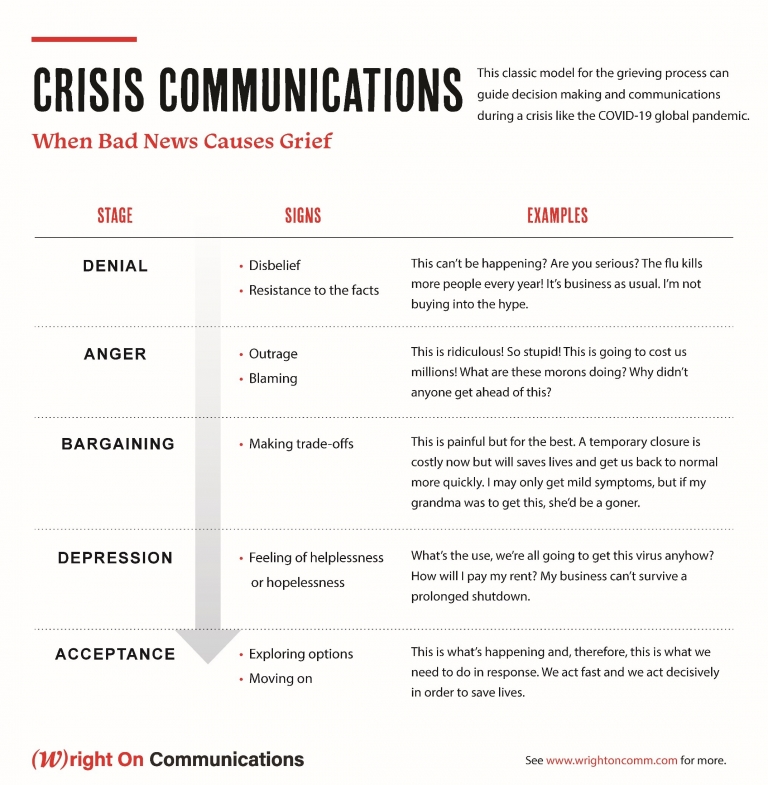 Some may go through the stages just as they are described below, and other people may move back and forth between stages. Some people may get stuck in one stage and have trouble reaching the final stage of the grief process.
Some may go through the stages just as they are described below, and other people may move back and forth between stages. Some people may get stuck in one stage and have trouble reaching the final stage of the grief process.
Experts describe 5 stages that are usually experienced by adults during the grief process.
- Denial and isolation - This first stage may start before the loss occurs if the death of the loved one is expected. Or it may begin immediately at the time or shortly after the loss. It can last anywhere from a few hours to days or weeks. The feelings experienced in the first stage of grief may be fear, shock, or numbness. The person may be have pangs of distress, often triggered by reminders of the deceased. During this time, the bereaved person may feel emotionally “shut off” from the world. The grieving person may avoid others or avoid talking about the loss.
- Anger - The next stage can last for days, weeks, or months.
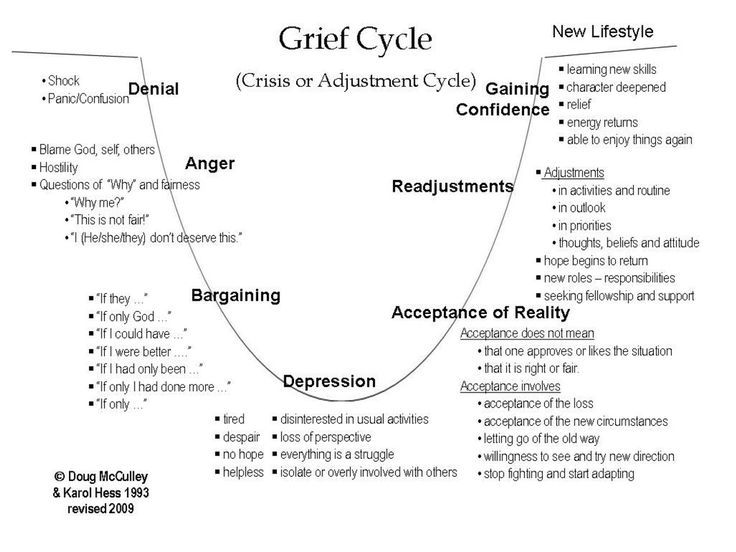 It is when the earliest feelings are replaced by frustration and anxiety. This stage can involve anger, loneliness, or uncertainty. It may be when the feelings of loss are most intense and painful. The person may feel agitated or weak, cry, engage in aimless or disorganized activities, or be preoccupied with thoughts or images of the person they lost.
It is when the earliest feelings are replaced by frustration and anxiety. This stage can involve anger, loneliness, or uncertainty. It may be when the feelings of loss are most intense and painful. The person may feel agitated or weak, cry, engage in aimless or disorganized activities, or be preoccupied with thoughts or images of the person they lost. - Bargaining - This stage is likely to be shorter than others. It happens when a grieving person is struggling to find meaning for the loss of their loved one. They may reach out to others and tell their story. In doing so, they may begin to think more clearly about the changes brought about by the loss of their loved one.
- Depression - As life changes are realized, depression may set in. This stage is used to describe a grieving person who feels overwhelmed and helpless. They may withdraw, become hostile, or express extreme sadness. During this time, grief tends to come in waves of distress.
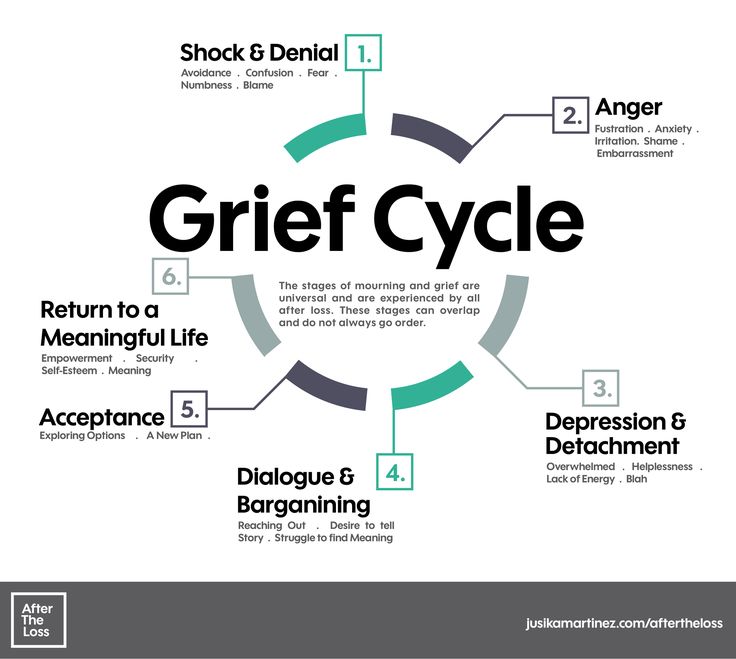
- Acceptance - This last phase of grief happens when people find ways to come to terms with and accept the loss. Usually, the person comes to accept the loss slowly over a few months to a year. This acceptance includes adjusting to daily life without the deceased.
Children grieve, too, but the process may look different from adults. To learn more about this, see Helping Children When a Family Member Has Cancer.
Some or all of the following may be seen in a person who is grieving:
- Socially withdrawing
- Trouble thinking and concentrating
- Becomes restless and anxious at times
- Loss of appetite
- Looks sad
- Feels depressed
- Dreams of the deceased (or even have hallucinations or “visions” in which they briefly hear or see the deceased)
- Loses weight
- Trouble sleeping
- Feels tired or weak
- Becomes preoccupied with death or events surrounding death
- Searches for reasons for the loss (sometimes with results that make no sense to others)
- Dwells on mistakes, real or imagined, that they made with the deceased
- Feels guilty for the loss
- Feels all alone and distant from others
- Expresses anger or envy at seeing others with their loved ones
Reaching the acceptance stage and adjusting to the loss does not mean that all the pain is over. Grieving for someone who was close to you includes losing the future you expected with that person. This must also be mourned. The sense of loss can last for decades. For example, years after a parent dies, the bereaved may be reminded of the parent’s absence at an event they would have been expected to attend. This can bring back strong emotions, and require mourning yet another part of the loss.
Grieving for someone who was close to you includes losing the future you expected with that person. This must also be mourned. The sense of loss can last for decades. For example, years after a parent dies, the bereaved may be reminded of the parent’s absence at an event they would have been expected to attend. This can bring back strong emotions, and require mourning yet another part of the loss.
SAMHSA’s National Helpline | SAMHSA
Your browser is not supported
Switch to Chrome, Edge, Firefox or Safari
Main page content
-
SAMHSA’s National Helpline is a free, confidential, 24/7, 365-day-a-year treatment referral and information service (in English and Spanish) for individuals and families facing mental and/or substance use disorders.
Also visit the online treatment locator.
SAMHSA’s National Helpline, 1-800-662-HELP (4357) (also known as the Treatment Referral Routing Service), or TTY: 1-800-487-4889 is a confidential, free, 24-hour-a-day, 365-day-a-year, information service, in English and Spanish, for individuals and family members facing mental and/or substance use disorders.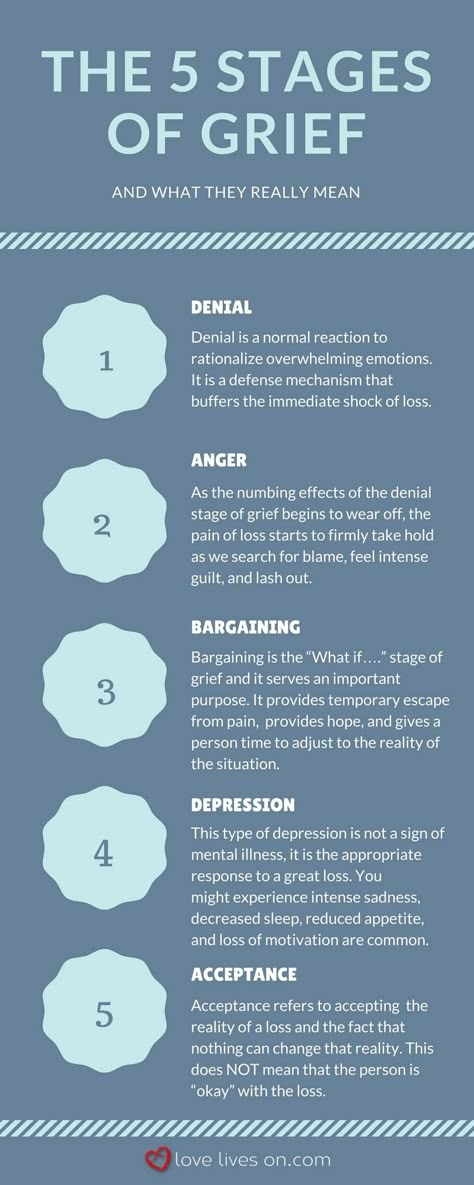 This service provides referrals to local treatment facilities, support groups, and community-based organizations.
This service provides referrals to local treatment facilities, support groups, and community-based organizations.
Also visit the online treatment locator, or send your zip code via text message: 435748 (HELP4U) to find help near you. Read more about the HELP4U text messaging service.
The service is open 24/7, 365 days a year.
English and Spanish are available if you select the option to speak with a national representative. Currently, the 435748 (HELP4U) text messaging service is only available in English.
In 2020, the Helpline received 833,598 calls. This is a 27 percent increase from 2019, when the Helpline received a total of 656,953 calls for the year.
The referral service is free of charge. If you have no insurance or are underinsured, we will refer you to your state office, which is responsible for state-funded treatment programs. In addition, we can often refer you to facilities that charge on a sliding fee scale or accept Medicare or Medicaid.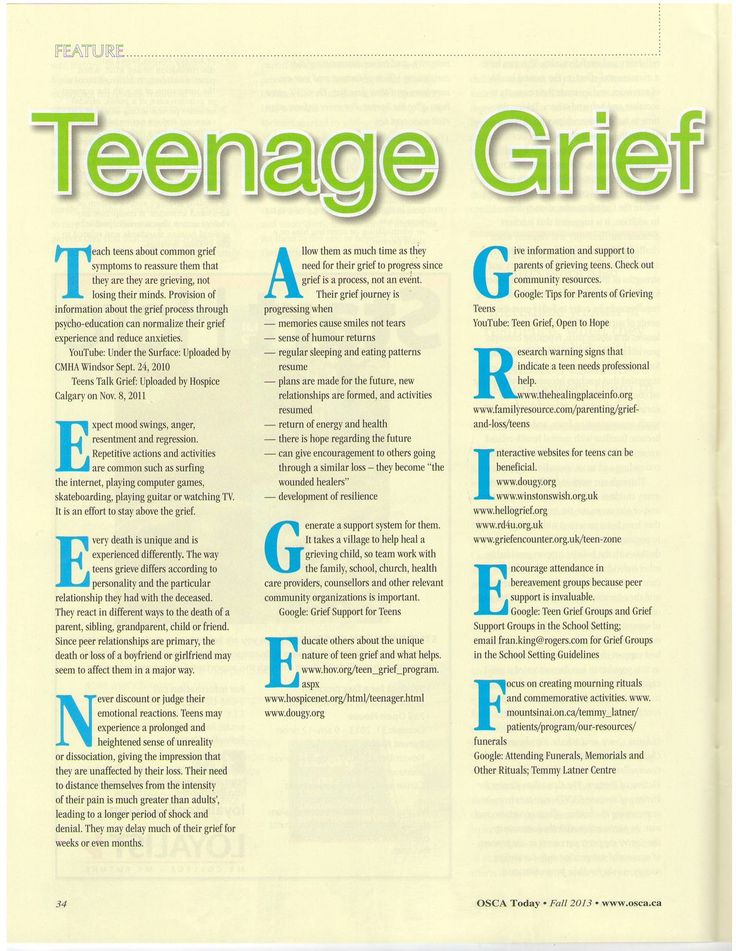 If you have health insurance, you are encouraged to contact your insurer for a list of participating health care providers and facilities.
If you have health insurance, you are encouraged to contact your insurer for a list of participating health care providers and facilities.
The service is confidential. We will not ask you for any personal information. We may ask for your zip code or other pertinent geographic information in order to track calls being routed to other offices or to accurately identify the local resources appropriate to your needs.
No, we do not provide counseling. Trained information specialists answer calls, transfer callers to state services or other appropriate intake centers in their states, and connect them with local assistance and support.
-
Suggested Resources
What Is Substance Abuse Treatment? A Booklet for Families
Created for family members of people with alcohol abuse or drug abuse problems. Answers questions about substance abuse, its symptoms, different types of treatment, and recovery.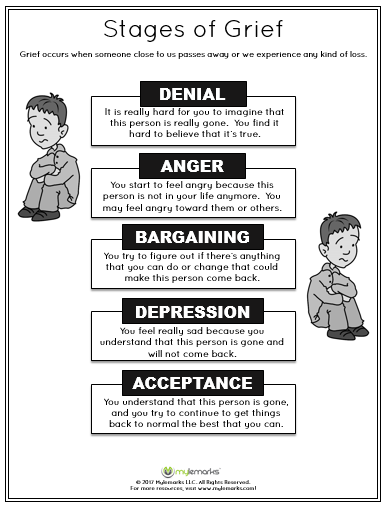 Addresses concerns of children of parents with substance use/abuse problems.
Addresses concerns of children of parents with substance use/abuse problems.It's Not Your Fault (NACoA) (PDF | 12 KB)
Assures teens with parents who abuse alcohol or drugs that, "It's not your fault!" and that they are not alone. Encourages teens to seek emotional support from other adults, school counselors, and youth support groups such as Alateen, and provides a resource list.After an Attempt: A Guide for Taking Care of Your Family Member After Treatment in the Emergency Department
Aids family members in coping with the aftermath of a relative's suicide attempt. Describes the emergency department treatment process, lists questions to ask about follow-up treatment, and describes how to reduce risk and ensure safety at home.Family Therapy Can Help: For People in Recovery From Mental Illness or Addiction
Explores the role of family therapy in recovery from mental illness or substance abuse. Explains how family therapy sessions are run and who conducts them, describes a typical session, and provides information on its effectiveness in recovery.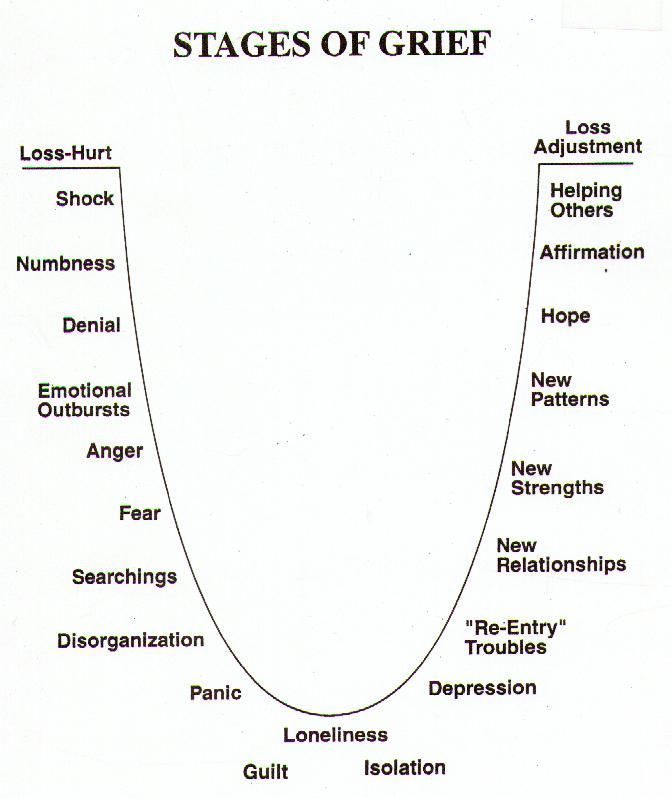
For additional resources, please visit the SAMHSA Store.
Last Updated: 08/30/2022
Five stages of grief - truth or myth?
- Claudia Hammond
- BBC Future
Denial, anger, compromise, depression and acceptance. Is it true that a person experiencing the pain of loss goes through certain stages? Let's look at the research data.
image copyrightMilan Popovic / Unsplash
"Tosca is a place we don't know until we visit it ourselves. We realize that loved ones can die, but we don't know exactly what awaits us in the first days and weeks after losses".
These are the words of the American writer Joan Didion, who described her feelings in the first year after the death of her husband in an extremely emotional confession "The Year of Magical Thinking".
The theory of five stages of grief - denial, anger, compromise, depression and acceptance - is firmly rooted in popular culture.
Articles are written about her and remembered in serials, and the artist Damien Hirst created a series of paintings, calling them the acronym "DABDA" (denial, anger, bargaining, depression, acceptance).
How long each stage lasts is not specified, but it is believed that all of them must pass in a certain sequence.
- Regular exercise saves you from depression. But not always
- How hormones, immunity, microbes, and pulse affect our character
- How parents' fights affect children's health studied the disposition of children to parents) and Colin Murray-Parks.
Researchers interviewed 22 widows and identified four stages of grief: numbness, searching and longing, depression and rethinking.
The current classification was developed by psychologist Elisabeth Kübler-Ross, who worked with terminally ill patients and asked about their near-death experiences.

Kübler-Ross, by the way, radically changed the attitude towards palliative care and raised the question of the doctor's responsibility not only for the health of patients, but also for how they live their last days.
Image copyright, Getty Images
Image caption,How does a terminally ill person feel?
Skip the podkast
Podkast
Scho TS BULO
GOLOVNA TIZHNYA, Yaku explain our journalism
VIPSISKS
, as a system of system, as a systematic audit, as a systematic audit, as a systematic check, as a systematic check, as a systematic audit, as a systematic check In the early 2000s, Yale University researchers first took up this topic.
Over the course of three years, they interviewed 233 bereaved people (usually a wife or husband). The interviews were conducted approximately six, eleven and nineteen months after death.
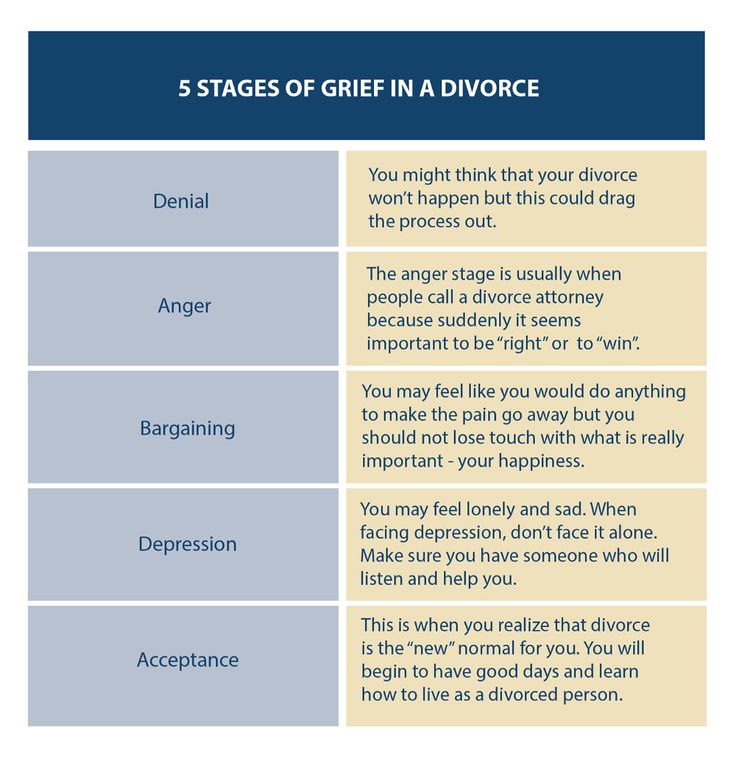
The researchers did not look at cases of violent death of a relative or complex grief reactions.
The picture they got was more complex than the five-stage hypothesis. The researchers found that the most common emotion was acceptance, while denial was not experienced by everyone or to the same extent.
The second strong emotion was longing, and a depressed state accompanied all stages, and it was more pronounced than anger.
In addition, the emotional stages did not change each other in a clear sequence. A person in the third stage of grief could, for example, experience acceptance rather than anger.
Image copyright, Getty Images
Image caption,A popular theory is that when we experience grief, we go through five successive stages.
Longing for the deceased can last for years, but in the end, most people cope with grief.
For ethical reasons, the first interviews were conducted only a month after death, and therefore the researchers did not have an accurate picture of what a person feels in the first days and weeks after the loss.
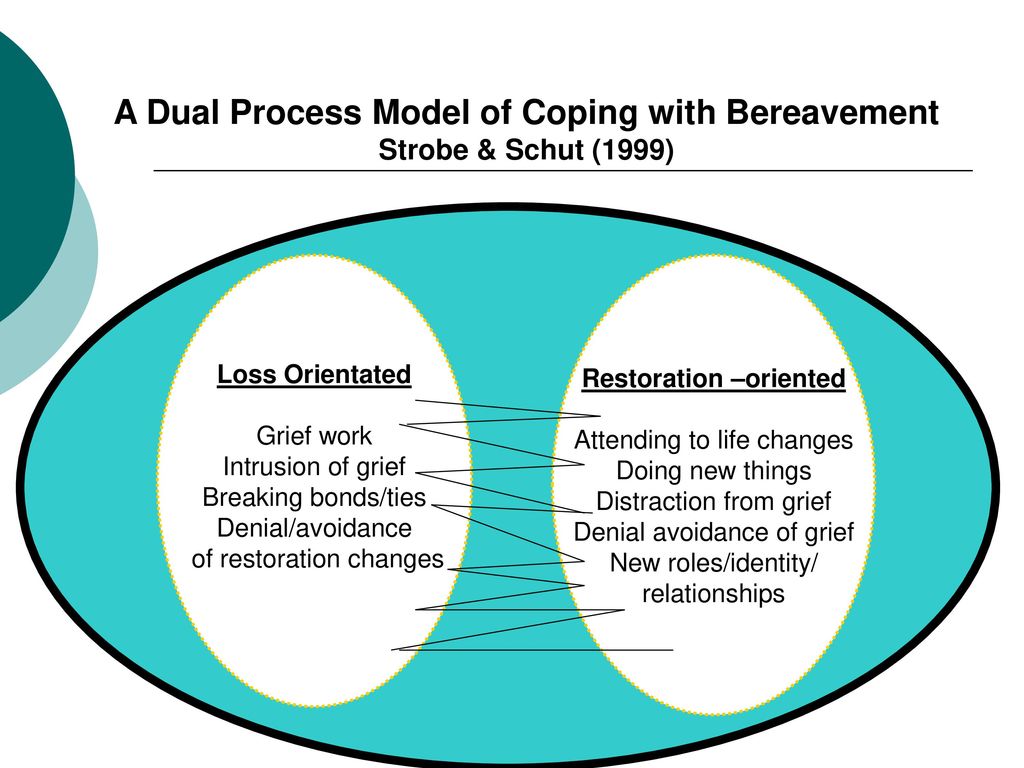
Later, a study of people's reactions to violent death was conducted, but its participants were mainly students who lost more distant relatives than their spouse.
A strict sequence of stages was also not confirmed, although acute mental pain was more characteristic of the first stage, and acceptance - the last. However, unlike in the previous study, the scientists did not follow the reactions of one person over a long period of time.
Another study found that older people experience loss differently.
George Bonanno of Columbia University observed elderly couples before and after the death of one of their spouses. He found that 45% of people did not feel severe pain either immediately after the death of their other half, or later.
10% of widowers and widowers even felt some relief. People showed resilience and were able to cope with grief.
Bonanno's latest study in 2012 also disproved the idea of stages of grief.

However, whatever the results of the research, the theory of five stages of grief is attractive in a certain sense, because it gives people hope for gradual relief.
Ruth David Koenigsberg, author of The Truth About Grief, notes that the five-stage theory makes people feel certain things.
"It calms those who have similar emotions, but makes those who experience the death of loved ones differently feel guilty," Koenigsberg writes.
Image copyright, Unsplash
Image caption,Everyone experiences loss in their own way
"A person may think that something is wrong with him, that he does not feel what he should feel," the author adds.
However, research clearly shows that there is simply no "correct" way to mourn a loved one. Everyone experiences grief differently, and that's natural.
The feeling of loss remains, but the longing goes away with time, at least for most people.
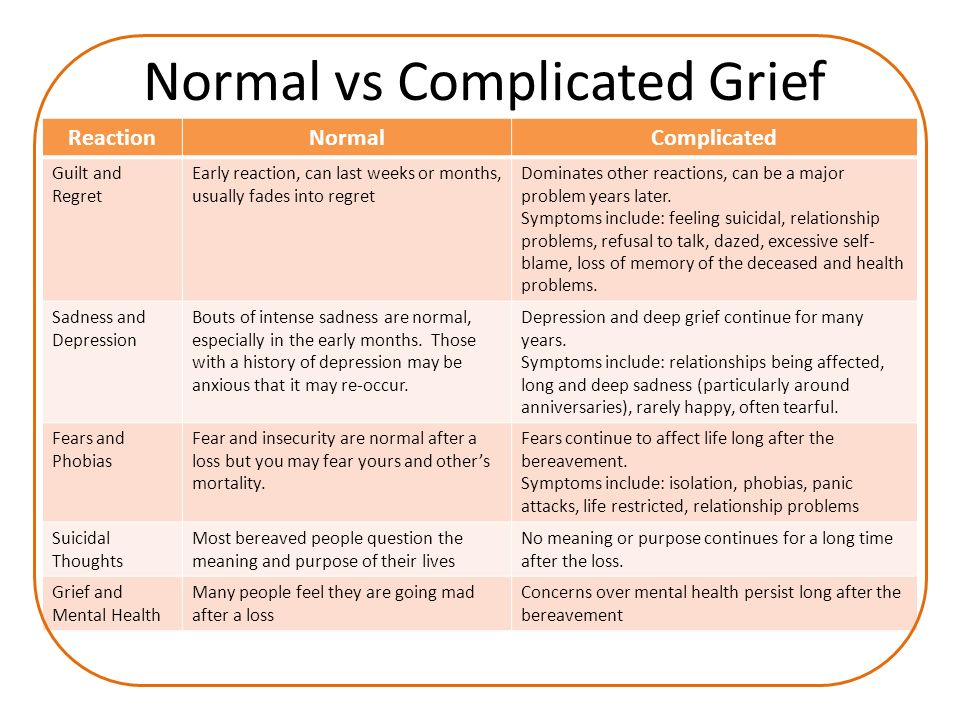
Some "scenario" of what you will experience next can be somewhat reassuring, but, unfortunately, real experience often differs from theory.
After all, life is much more complicated.
The purpose of the article is general information. It cannot replace the medical advice of a specialist. The BBC is not responsible for any diagnosis made reader based on information from the site. The BBC is not responsible for the content of any external Internet sites linked to by the authors of the article, nor does it endorse any commercial product or service mentioned on on on any site. Always consult your doctor if you have questions related to your health.
You can read the original of this article in English on the website BBC Future .
Follow our news on Twitter and Telegram
4. Sorrow and processes of grief.
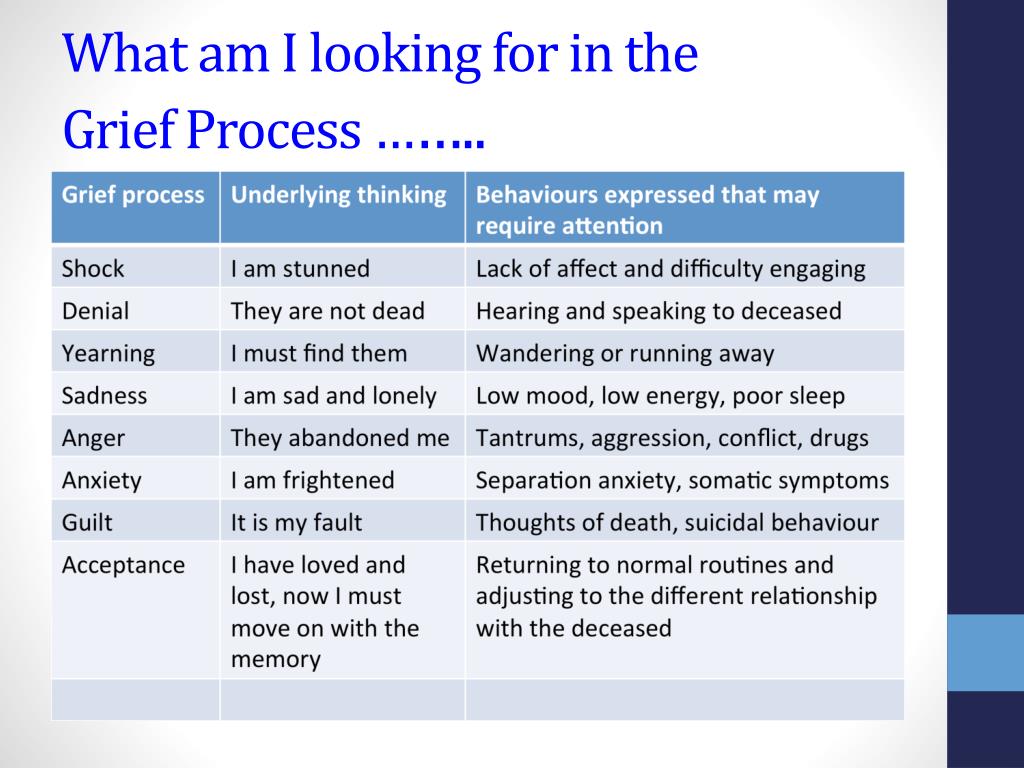 Missing without a trace... Psychotherapeutic work with relatives of the missing 4. Sorrow and processes of grief. Missing without a trace... Psychotherapeutic work with relatives of the missing
Missing without a trace... Psychotherapeutic work with relatives of the missing 4. Sorrow and processes of grief. Missing without a trace... Psychotherapeutic work with relatives of the missing WikiReading
Missing without a trace... Psychotherapeutic work with relatives of the missing
Preitler BarbaraContents
4. Grief and processes of grief
Grief is a very multi-layered process consisting of feelings, cognitions and actions. It helps to survive separation, loss and abandonment. Freud writes:
“What is the work of affliction? I don't think it's a stretch to put it this way: a reality check has shown that the beloved object no longer exists, and tells you to withdraw all libido associated with that object. Quite understandable resistance rises against this - in general, it is observed that a person does not easily leave the position of libido, even when a replacement is foreseen.
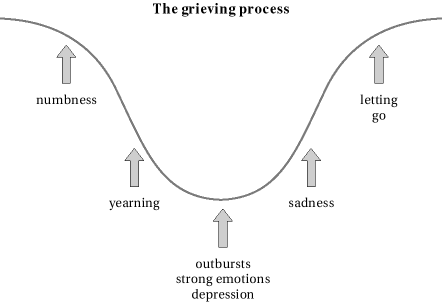 This resistance can be so strong that there is a withdrawal from reality and the object is held by a hallucinatory psychosis that embodies the desire. Usually respect for reality wins.”
This resistance can be so strong that there is a withdrawal from reality and the object is held by a hallucinatory psychosis that embodies the desire. Usually respect for reality wins.” (Freud, 1916, p. 431).
F. Shapiro speaks of the time of grief as a "frozen" time. Freud writes about it this way:
“We bury our hopes, claims, pleasures with the dead, do not allow ourselves to be consoled and resist replacing the loss. We act like members of the Azra tribe who die when someone they love dies.”
(Freud, 1994, p. 150).
Affected people describe their condition as a nightmare from which they will never wake up no matter what, as a time when they are unable to face reality and cannot lead a normal daily life. In addition, grieving people constantly deal with misunderstanding from those who have never experienced painful loss.
It is also important to understand that sorrow lasts a long time. According to Shapiro:
".
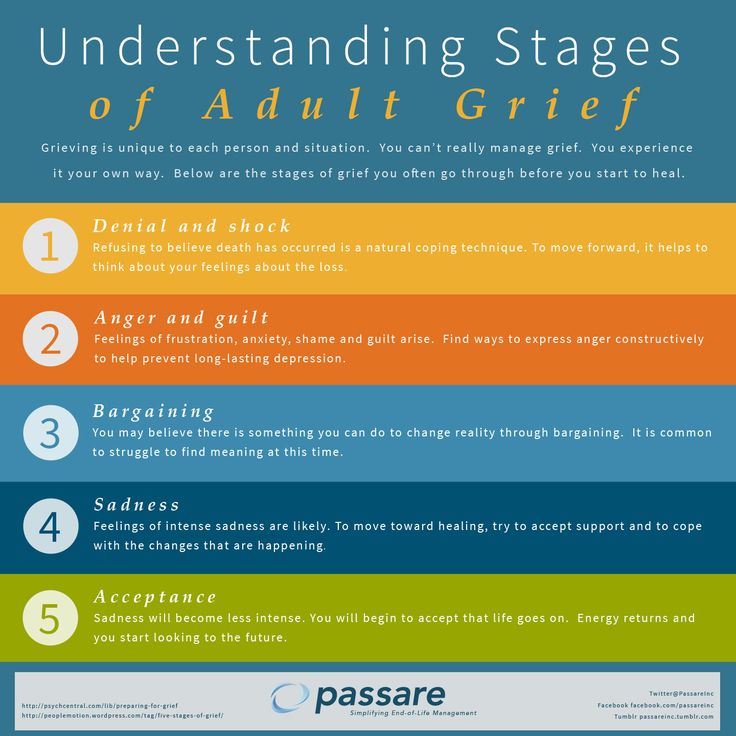 ..2-3 years is the usual necessary requirement for recovery from the loss of a spouse"
..2-3 years is the usual necessary requirement for recovery from the loss of a spouse" (Shapiro, 1994, p. 48).
However, the author does not have in mind the case of sudden and unexpected death, since then the phase of mourning can last much longer.
This text is an introductory fragment.
I. Grief as a reaction to loss
I. Grief as a reaction to loss 1. Loss without forgiveness The disappearance of a loved one without a trace is always a loss under especially difficult circumstances. In an enforced disappearance, the relatives of the missing person are confronted with an inexplicable, unexpected
4.1. Grieving Process
4.1.
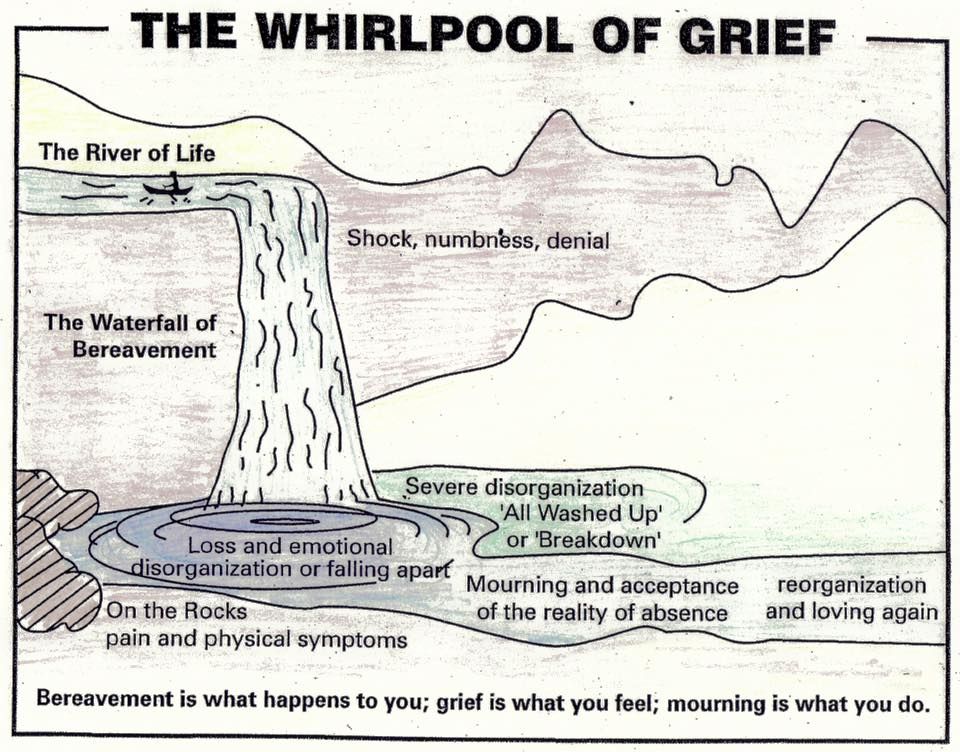 The process of mourning In the process of grief, different, sometimes even contradictory feelings can arise, and not all of them are manifested in every mourner, and their occurrence is possible at different stages: “The main states that the mourner goes through are pain, longing for
The process of mourning In the process of grief, different, sometimes even contradictory feelings can arise, and not all of them are manifested in every mourner, and their occurrence is possible at different stages: “The main states that the mourner goes through are pain, longing for 4.3. Grief Avoidance
4.3. avoiding grief The Rando mourning process (see Section 4.1.1) can be disrupted at any of the six stages and therefore protracted or chronified. At the same time, Rando (1992) points primarily to the refusal to believe in the reality of loss or
4.4. Complicated grief
4.4. Complicated grief Grieving can be complicated or completely suppressed by various biographical factors of the mourner or the circumstances of the loss. Rando (Rando, 1992) describes seven risk factors for complicated grief. Four of them directly
4.
 5. Grief and PTSD
5. Grief and PTSD 4.5. Grief and PTSD If a person dies after a long, fulfilling life, loved ones will mourn for him, but will not be traumatized by such a death. Conversely, there are traumatic events (such as being taken hostage) that can0011
4.6. Grief for missing loved ones
4.6. Grief for missing loved ones But what happens if the reality check yields nothing but uncertainty? What degree of normality can be achieved in the lives of people whose loved ones are missing? The concept of "grief" is definable, processes
5. Grief needs expression, witnesses and rituals
5. Grief needs expression, witnesses and rituals Sorrow must find expression both in ritual and in language. And words and rituals need witnesses to become reality. But it is also necessary to provide very specific opportunities for parting:
7.
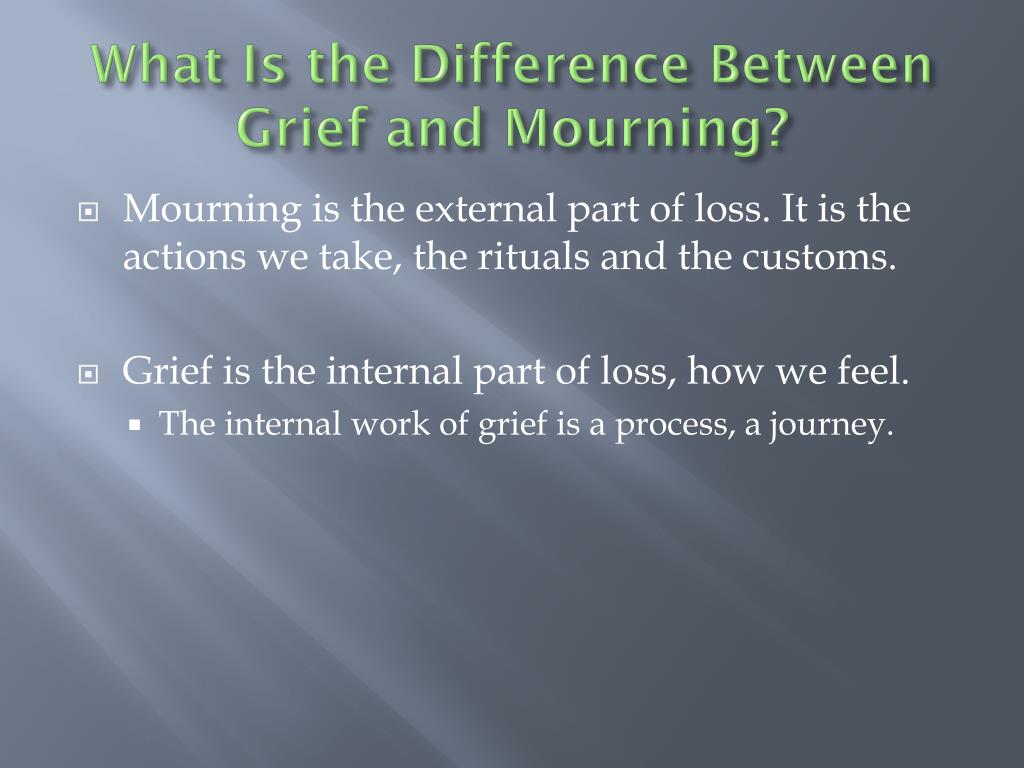 Children and sorrow
Children and sorrow 7. Children and grief If a family member is killed, seriously injured, or goes missing, the parents may be too overwhelmed to give the surviving children the care they need. In such cases, at this moment of grief, the less affected members of the family (aunt, cousin, etc.) should especially
Sorrow for lost love
Sorrow for lost love Many bear through the years and through the distance regret about the murdered love. In this feeling, love itself has long been gone, but there is resentment, regret, anger and even hatred for the object of that love. This set of feelings and emotions is a wonderful masochistic tool
Unapproved grief
Unapproved sorrow Unapproved grief is the result of a loss in which people do not feel their social right to experience this grief.
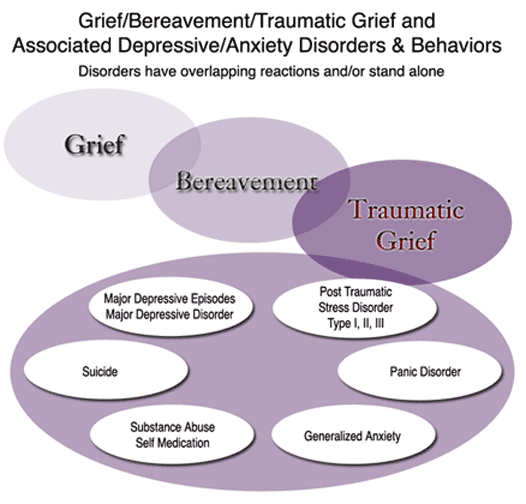 Unapproved grief is often not expressed openly, it does not meet with understanding in society. Here are examples: • Relationships are not
Unapproved grief is often not expressed openly, it does not meet with understanding in society. Here are examples: • Relationships are not When Grief Gets Complex
When sorrow gets complicated Despite our best efforts to mourn and heal, Life sometimes cheats. Bob and Marilyn, both in their 40s, have been married for 20 years. Bob was a person who loved noisy companies, he always attended different events, trying to be in time
Sorrow on birthdays, anniversaries and holidays
Sorrow on birthdays, anniversaries and holidays Birthdays, anniversaries and holidays suggest that people get together. But what happens when the people we love are no longer with us? These special days are some life milestones that we all share with
Sorrow for what never happened
Sorrow for what never was Most of us understand how we feel when we lose people or pets - but of course there are other types of grief, including what we experience in relation to our supposed lives.
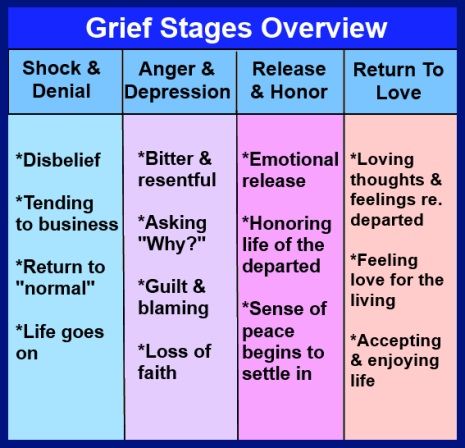
Learn more






